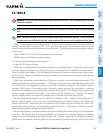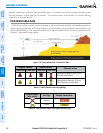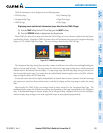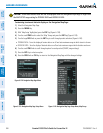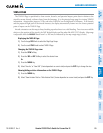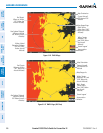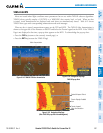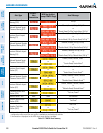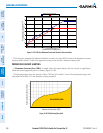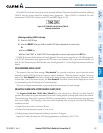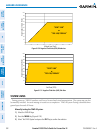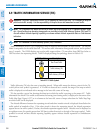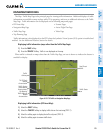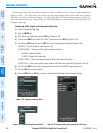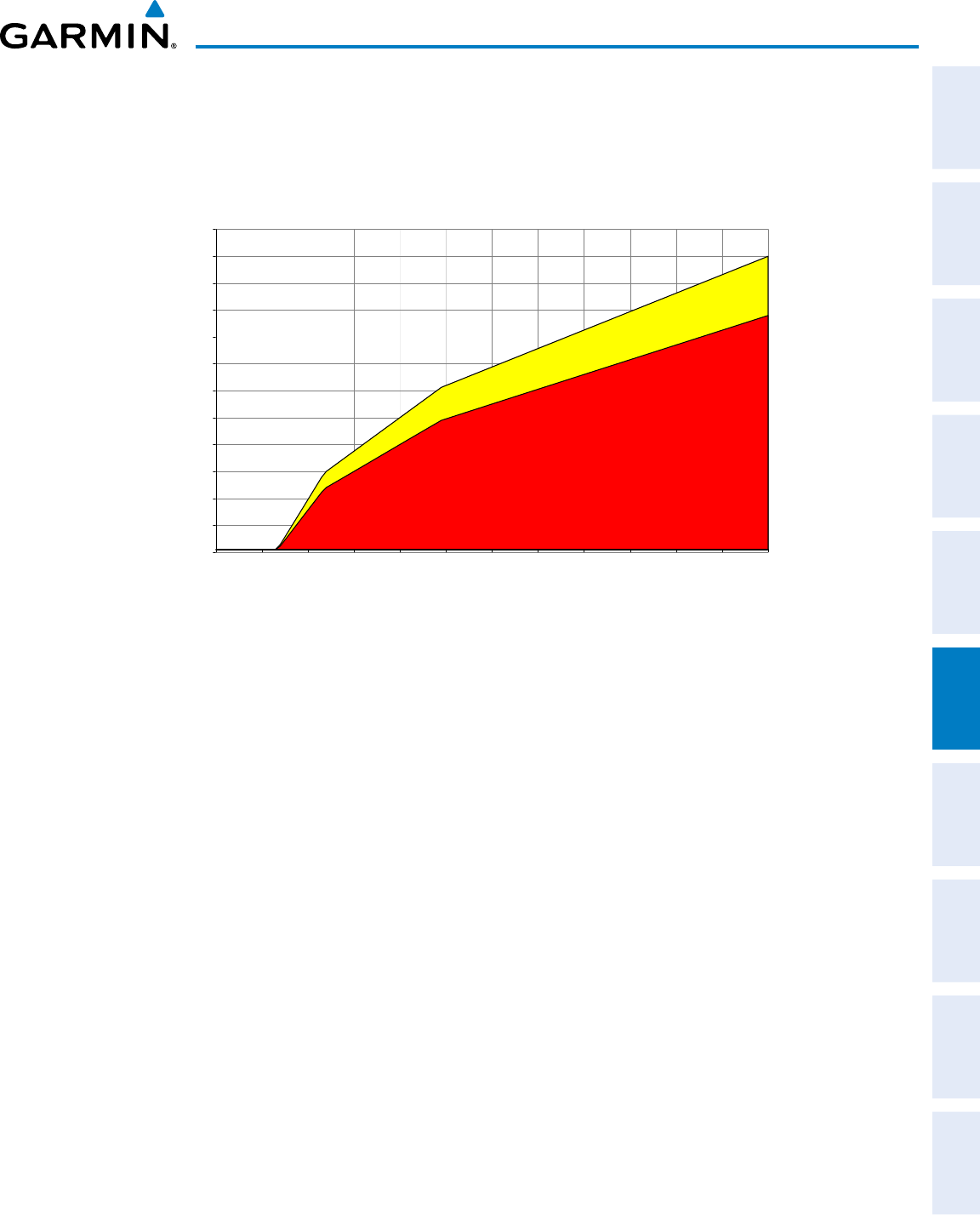
190-00498-07 Rev. A
Garmin G1000 Pilot’s Guide for Cessna Nav III
SYSTEM
OVERVIEW
FLIGHT
INSTRUMENTS
EIS
AUDIO PANEL
& CNS
FLIGHT
MANAGEMENT
HAZARD
AVOIDANCE
AFCS
ADDITIONAL
FEATURES
APPENDICES INDEX
389
HAZARD AVOIDANCE
EXCESSIVE DESCENT RATE ALERT
The purposeoftheExcessive Descent Rate (EDR) alert is to provide suitable notification when the
aircraftisdeterminedtobeclosing(descending)uponterrainatanexcessivespeed.Figure6-146showsthe
parametersforthealertasdenedbyTSO-C151b.
0
500
1000
1500
2000
2500
3000
3500
4000
4500
5000
5500
6000
0
1000
2000
3000
4000
5000
6000
7000
8000
9000
10000
11000
12000
Descent Rate (FPM)
Height Above Terrain (Feet)
Caution: “SINK RATE”
Warning: “PULL UP”
Figure 6-146 Excessive Descent Rate Alert Criteria
FORWARD LOOKING TERRAIN AVOIDANCE
TheForwardLookingTerrainAvoidance(FLTA)featureofTAWS-Bcomparestheaircraft’sprojectedight
pathwithknownterrainandobstaclesintheirrespectivedatabasesandissuesfourtypesofalertsaseithera
caution or a warning:
Reduced Required Terrain Clearance (RTC) and Reduced Required Obstacle Clearance (ROC)
alerts are issued when the aircraft flight path is above terrain, yet is projected to come within the minimum
clearancevaluesinFigure6-147.WhenanRTCalertisissued,apotentialimpactpointisdisplayedonthe
TAWS-BPage.
Imminent Terrain Impact (ITI) and Imminent Obstacle Impact (IOI) alerts are issued when the
aircraftisbelowtheelevationofaterrainorobstaclecellintheaircraft’sprojectedpath.ITIandIOIalerts
areaccompaniedbyapotentialimpactpointdisplayedontheTAWS-BPage.Thealertisannunciatedwhen
theprojectedverticalightpathiscalculatedtocomewithinminimumclearancealtitudesinFigure6-147.



